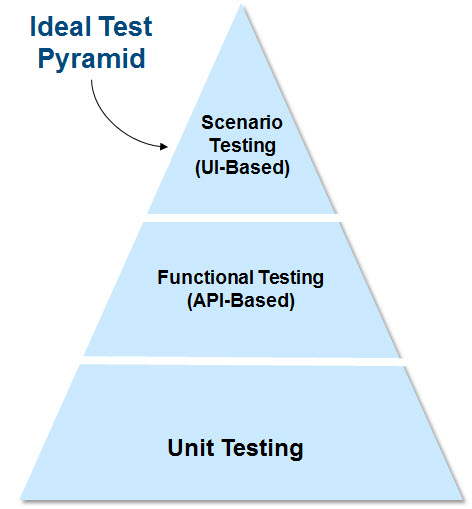Running scenario tests against a user interface
Run scenario tests against a user interface to verify that the end-to-end scenarios are functioning correctly. The UI-based scenario testing tool allows you to focus on creating functional and useful tests, rather than writing complex code.
You can test either a specific case type or an entire portal by clicking Scenario Testing in the run-time toolbar to open the test recorder. When you use the test recorder and hover over a testable element, an orange highlight indicates that the element can be tested. Interactions are recorded in a visual series of steps and the execution of a test step can include a delay.
Provide data to your test cases with a predefined data page. This data page can provide unique values for each execution of the test case. You can populate the data page by using any source, including activities or data transforms.
Tests are saved in a test ruleset. After they are saved, tests are available on the scenario testing landing page. From the landing page you can run a test or view the results of a previous test run.
Testing applications in the DevOps pipeline
Having an effective automation test suite for your application in your continuous delivery DevOps pipeline ensures that the features and changes that you deliver to your customers are of high-quality and do not introduce regressions.
At a high level, the recommended test automation strategy for testing your Pega applications is as follows:
- Create your automation test suite based on industry best practices for test automation
- Build up your automation test suite by using Pega Platform capabilities and industry test solutions
- Run the right set of tests at different stages of your delivery pipeline
- Test early and test often
Industry best practices for test automation can be graphically shown as a test pyramid. Test types at the bottom of the pyramid are the least expensive to run, easiest to maintain, take the least amount of time to run, and should represent the greatest number of tests in the test suite. Test types at the top of the pyramid are the most expensive to run, hardest to maintain, take the most time to run, and should represent the least number of tests in the test suite. The higher up the pyramid you go, the higher the overall cost and the lower the benefits.

- Scenario testing on Pega Platform
Run scenario tests against a user interface to verify that the end-to-end scenarios are functioning correctly. You can record a set of interactions for a case type or portal in your scenario tests. You can also group related scenario tests into test suites to run multiple scenario test cases in a specified order.
- Scenario testing as an add-on component
As of Pega Platform version 8.5 and newer, the scenario testing feature is being decoupled from the native Pega Platform and is released as an independent component. See for release-specific enhancements and updates to the functionality.
Previous topic Contents form in AUT test suite Next topic Scenario testing on Pega Platform
